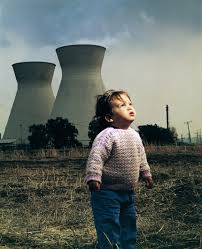 Newly released documents are raising questions about the US Nuclear Regulatory Commission's (NRC) September 8, 2015 decision to abandon a contract with the National Academy of Sciences (NAS) to study cancer mortality and incidence around US nuclear power stations. The announcement scrapped 5 years of scientific study and a $1.5 million investment in guarding public health and safety. The NRC reasoned that the NAS study would cost too much, take too long and not provide a statistically strong outcome. That's really rich considering the NRC and Tennessee Valley Authority just took 43 years to issue a 40 year operating license fiasco for the Watts Bar Unit 2 nuclear power station and tallying up to $6.1 billion in construction cost. However, the government documents obtained through the Freedom of Information Act (FOIA) raise serious questions about the real intent behind the NRC decision to walk away from its contract with the NAS to study the connection of public health to radioactive releases.
Newly released documents are raising questions about the US Nuclear Regulatory Commission's (NRC) September 8, 2015 decision to abandon a contract with the National Academy of Sciences (NAS) to study cancer mortality and incidence around US nuclear power stations. The announcement scrapped 5 years of scientific study and a $1.5 million investment in guarding public health and safety. The NRC reasoned that the NAS study would cost too much, take too long and not provide a statistically strong outcome. That's really rich considering the NRC and Tennessee Valley Authority just took 43 years to issue a 40 year operating license fiasco for the Watts Bar Unit 2 nuclear power station and tallying up to $6.1 billion in construction cost. However, the government documents obtained through the Freedom of Information Act (FOIA) raise serious questions about the real intent behind the NRC decision to walk away from its contract with the NAS to study the connection of public health to radioactive releases.
The NRC had originally commissioned the National Academies to update the controversial 1990 National Cancer Institute’s study and finding of no connection to cancer mortality and radioactive releases that was more a blunt instrument to quash the legitimate health concerns of reactor communities than a refined scientific assessment. The NCI conclusion was made more dubious by the near simultaneous 1990 publication of an epidemiological study by the Massachusetts Department of Health study finding of a 400% statistical increase in rare adult leukemia around the Pilgrim nuclear power station that the health department correlated to the proximity and duration of residency to the reactor. Since then, cancers studies in Germany and France have found a doubling of childhood leukemia around nuclear power stations in those countries.
The NAS had just completed Phase 1 of the two-phase study selecting two epidemiological methods to proceed around seven pilot nuclear facilities in the United States. Upon completion of the pilot study, projected to take another three years and $8 million, the NAS would select the stronger methodology for completing the requested nationwide study around nuclear facilities.
The NRC was instead looking for the NAS to provide some certainty of its scientific findings before allowing the pilot study to proceed. When the NAS could not provide a guarantee the NRC cancelled the study after considering cheaper and quicker alternatives that would never materialized. In the end, the public got nothing.
“You do not know whether the study will find something unless you do the study,” Rania Kosti, who was coordinating the study for NAS, recently told the Orange County Register near the now closed San Onofre reactor site.
In our view, rather than kill the study in total, one alternative would have been to downsize the pilot program to examine cancer mortality and incidence around a narrower range of reactor sites in order to find a potentially stronger statistical model. An obvious candidate area would have been to look at exposed populations downwind and downstream of multiple overlapping reactor sites---like the seven units at Braidwood, Dresden and LaSalle nuclear power stations in Illinois where strong anecdotal evidence continues to identify cancer clusters among children and young adults.
Instead, the NRC and the nuclear industry remain content to take no action and rely on an assumed claim of no causal relation between radioactive releases from nuclear power stations and contribution to an ongoing cancer epidemic. Once again, the NRC promotion of an industry production agenda trumps public health concerns.